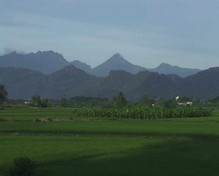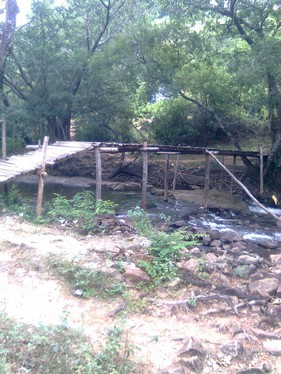Agasthya
A newsletter on the Natural History, Ecology
and Conservation of the Agasthyamalai region, Western Ghats, India.
ASHOKA TRUST FOR RESEARCH IN ECOLOGY AND THE ENVIRONMENT
Centre for Excellence in Conservation Science
Royal Enclave,Srirampura,Jakkur Post
Bangalore-560064
Telephone: 080-23635555 (EPABX)
Fax : 080- 23530070
Any and all opinions expressed in this newsletter are solely those of the author(s) and do not reflect the opinion of ATREE.
Editorial Team
Editor: T. Ganesh
Associate editor: Vivek Ramachandran
Editorial Review: R. Ganesan, M. Soubadra Devy
Design and presentation: Vivek Ramachandran
A S H O K A T R U S T F O R R E S E A R C H I N E C O L O G Y A N D T H E E N V I R O N M E N T
This is probably the best introduction to conservation science one could have asked for. First off starting with a series of lectures and resource material to give us perspective and expose us to different theories and tools in conservation. Next, visiting a protected area of which I had no knowledge apart from its geographic location, hence no initial bias and two days of orientation on ATREE's work in and around KMTR to give us time to select our areas of work.
Ten days, forty miles and layers of sun-tan later, it would still be an exaggeration to say I know Mundanthurai range like the back of my hand, but I certainly do know it better than almost any park having walked twelve trails collecting data on occupancy.
The ancient Sorimuthian Kovil (SMK) on the Thamirabharani river has always attracted the devout from southern and other parts of Tamil Nadu during the Aadi ammavasai festival. With the population explosion and the increasing hunger for land destroying and fragmenting critical ecosystems, the government has set up a series of national parks and wildlife sanctuaries to protect the nation's water sources and to serve as arks of biodiversity. Kalakkad Mundanthurai Tiger Reserve is one such ark which also serves as host to SMK and unwittingly to the lakhs of pilgrims who flock to its sacred environs each year. In recent years, the numbers of pilgrims has crossed 5 lakhs. Hypothesizing that this unregulated flow of people in a tiger reserve could adversely affect the wildlife of the reserve, we decided to conduct occupancy studies in selected animal trials at varying distances from SMK complex, before, during and after the festival.
Pre and during festival occupancy data had already been collected and so my studies were restricted to collecting post festival occupancy data and comparing it with the earlier data. My studies suggested that there was no significant change in omnivore and herbivore usage of the selected animal trails, there was reason to suggest that carnivore use may have been affected, but the data in hand was insufficient to draw significant conclusions and further studies are required.
Having said that, the experience of designing and conducting a scientific study coupled with my best bird count in years with 8 lifers has made this a very rewarding experience.
A rickety bridge across one on the trails.
Photo: Arjun
An introduction to the science of conservation
- Anavangote Arjun








